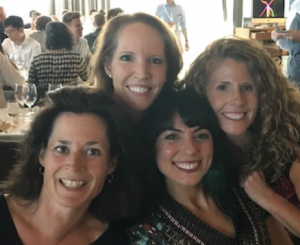Recently I attended the annual Behavior Genetics Association (BGA) meeting in Oslo. Having gone every year for the first decade or so of my career, since having children it has been a rarer pleasure, and I was delighted to be there. Before going, some of us had talked about writing a blog reporting on the new findings presented, but something even closer to my heart than the science struck me most in the time I spent there. This was the greatly increased visibility of the women at the meeting.

Don’t get me wrong, there have been plenty of women attending BGA conferences for years, but usually these have primarily been graduate students. As with all areas of science, female leaders of the field were rather few and far between – reflecting an ongoing issue with loss of women at every career stage, with this being particularly marked at the most senior levels.
Fast forward 20 years, and I realised there was now a quorum of female senior scientists, of roughly my vintage, who are leading internationally-renowned research groups. This was a really exciting realisation and led to a clear difference in the vibe of the meeting; to me at least. This issue has been really highlighted in the UK, following Dame Sally Davies announcing that prestigious funding would be reserved for universities that can demonstrate that they are putting effort into retaining women at senior career stages (by getting an Athena SWAN silver award). As a result I was very aware of efforts in the UK, and particularly at King’s College London, on this issue, but I had never been so struck by progress on this front than I was at this conference.

The first sign of this change for the better emerged before I even arrived, as I had been asked to give a keynote. At this meeting as at many others in science, the majority of keynotes are given by males at least 10 years older than me, so I was really delighted to represent my female peer group in the field in this way. It was also a wonderful platform on which to talk about the way in which our genetic research methods are beginning to make a difference with respect to understanding how emotional disorders travel through the generations, and how we might best understand what treatments will work for whom and why.
The second sign was that, for the first time I can recall, the past (Hermine Maes), current (Deborah Finkel) and future (Jenae Neiderhiser) presidents, all of whom have a major role at each annual meeting, are female. This provides visible role models for younger women in the field – even if senior scientists where they are based still tend to be primarily male.
Finally, this fabulous group of female investigators were there, supporting their students and displaying their impressive understanding of their subject but also showcasing a highly collaborative, supportive approach that is especially beneficial to younger female academics. My favourite example of this was Danielle Dick, who generously chose to spend her presentation time talking about her study “Spit for Science” where all students enrolling at Virginia Commonwealth University are invited to provide saliva samples (for DNA) and to complete measures of wellbeing. Looking after the mental health of the cohort is being considered hand-in-hand with the science of exploring what makes people develop mental health problems, and what can be done to prevent this. Danielle made an open offer to those at the meeting to contact her to collaborate on analysing this fascinating dataset – something I, for one, will be taking her up on!

There are so many things one can do to chip away at the tendency for females to leave science (and many other professions) at early career stages. To my mind, the most powerful is make sure that those of us that find a way to juggle all that this involves (the subject of my first ever blog), are visible and open about our experience and are encouraging to others heading in the same direction.
